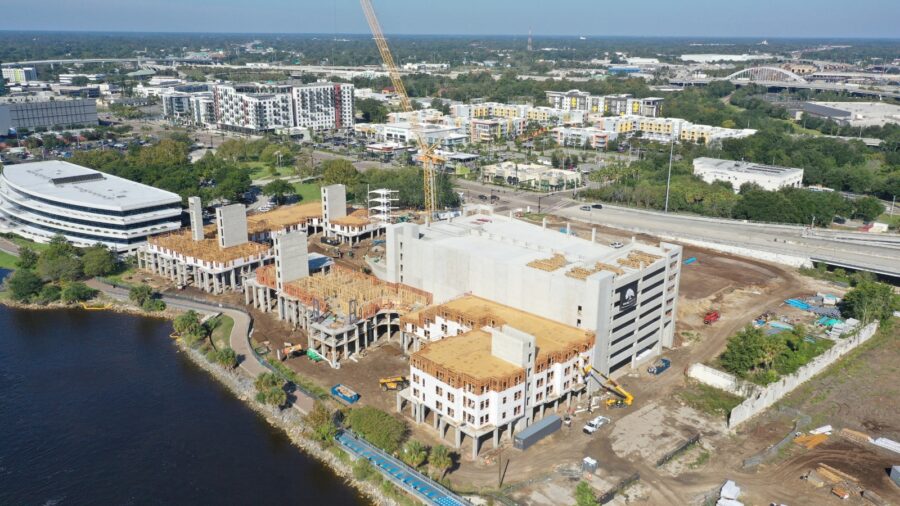As published by the Orlando Business Journal (March 1, 2025)
The construction industry continues to evolve in response to economic uncertainty and shifting market conditions. Multifamily developers, in particular, face challenges such as fluctuating interest rates, insurance costs and supply chain concerns. Despite these headwinds, strategic decision-making and long-term planning are helping industry leaders stay ahead.
Paul Bertozzi, president and CEO of Live Oak Contracting, provides insight into the state of the market and how developers can navigate the evolving landscape to build resiliency and create value.
The current state of multifamily construction
While no new tariffs are currently in place, market speculation and economic uncertainty have contributed to cost fluctuations in key construction materials. Bertozzi explains that although materials like steel, aluminum and manufactured products remain susceptible to price increases, lumber and gypsum were excluded from prior tariffs.
“Market concerns alone can drive price volatility,” he notes. “Even without direct tariffs, suppliers often adjust pricing based on perceived risks and global economic conditions.”
Managing rising costs and supply chain concerns
Bertozzi emphasizes that cost management and early procurement strategies are crucial for developers looking to mitigate financial risks. “We work closely with trade partners to anticipate supply chain disruptions and secure materials early, when necessary,” he explains. “By planning ahead, we help protect projects from unexpected cost surges.”
While rising steel and aluminum costs have impacted manufactured products, Bertozzi clarifies this has not led to a widespread shift toward alternative building materials. “Higher material costs have not pushed developers to switch to different products,” he explains. “Instead, they have contributed to project delays, as many developers wait for more favorable pricing before moving forward. In 2022, some considered alternative materials due to a significant cost delta, but that’s not happening in the same way today. The primary impact now is on project starts rather than material selection.”
The Impact of interest rates on development
Interest rates remain a major factor influencing new construction. With rates stabilizing at higher levels, developers are adjusting their financing strategies. “We’ve entered a ‘higher for longer environment,” says Bertozzi. “Developers need to structure deals with this in mind, ensuring projects remain financially viable even with increased borrowing costs.”
Despite these challenges, rental demand continues to drive new construction. “The absorption rate for rental units has slowed, but demand is still present,” he explains. “Developers who move forward now will be well-positioned when the market corrects.”
Why long-term investment still pays off
Historical trends show that developers who continue building during economic slowdowns often achieve the highest returns when conditions improve. “Those who invested during past downturns — such as the post-COVID market — saw substantial growth when demand rebounded,” Bertozzi points out. “Waiting too long can mean missing key opportunities.”
He advises developers to focus on markets with strong fundamentals and future growth potential. “Student housing, for example, remains a thriving sector due to consistent demand from universities,” he explains. “Markets with strong employment and population growth will continue to be attractive for long-term investment.”
Looking ahead: Resiliency in multifamily construction
Bertozzi remains optimistic about the future of multifamily development. “The market is cyclical, but those who take a proactive approach will come out ahead,” he says. “By investing strategically, working with strong partners, and adapting to economic shifts, developers can build resilient portfolios that weather market fluctuations.
Live Oak Contracting remains committed to helping its partners navigate these challenges by leveraging experience, market expertise and strategic planning. As the industry adapts, those who stay informed and take calculated risks will continue to find success in multifamily construction.




